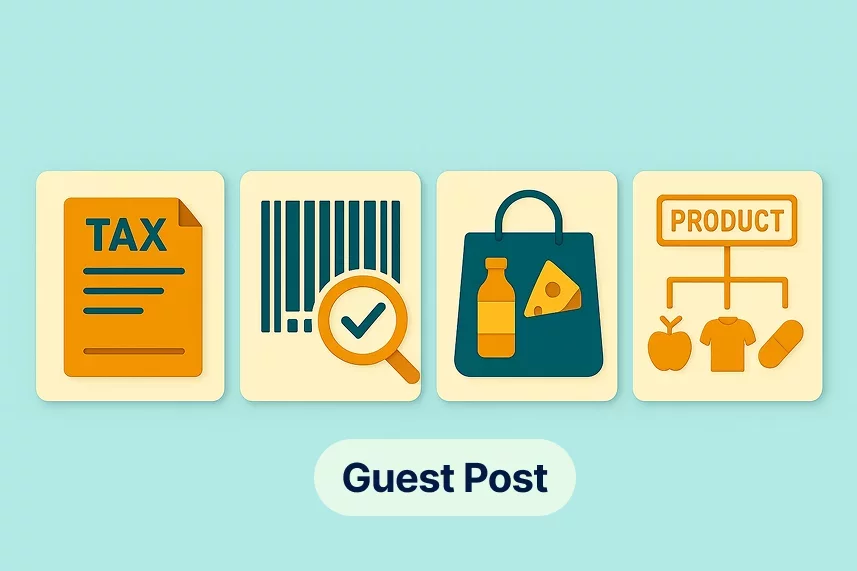5 Challenges for EU Businesses Managing US Sales & Use Tax and How to Overcome Them

Businesses based within the European Union (EU) must navigate a series of complexities and specific requirements when it comes to managing US Sales & Use Tax.
VAT regimes – such as those found across Europe and beyond – are typically unified; meaning processes applied to trading in one jurisdiction can often be duplicated across other countries by tax teams.
However, the US system underpinned by Sales & Use Tax is widely deemed to be more fragmented and highly complex in comparison.
This understandably creates all manner of complications for companies within the EU upon selling goods or services into the US, especially when it comes to tax determination and complying with tax obligations across multiple jurisdictions.
Here’s our overview of five of the key challenges European businesses must face when trading in the US and therefore being required to manage Sales & Use Tax. And, more importantly, we’ll tell you how to overcome them:
1. The remarkable complexity of the US Sales & Use Tax system
Problem: Fragmented tax system
The first significant challenge European businesses face is the sheer complexity of the US tax system.
Unlike the VAT system in the EU, which is typically harmonised across member states, the US operates a fragmented system where taxes are imposed at the federal, state, and local levels.
Due to the various jurisdictions – such as states, counties, and cities – each setting their own rates, the US has over 100,000 different Sales & Use Tax rates in place at any time. It’s no wonder it can be almost impossible to manually determine and remit all of them!
What’s more, each US state can have a different tax structure, including state-specific taxes like commercial rent in Florida or tourism taxes in Mississippi.
Some states, like Colorado, even differentiate between Sales Tax and Use Tax rates, adding further complications. This variability is absent in the EU, where a few standardised VAT rates simplify cross-border transactions.
Solution: Automation and technology integration
For European businesses, manually managing such an intricate tax environment is a recipe for errors and inefficiencies.
Manual determination alone requires enormous human resources to get right considering the extraordinary number of rates in existence.
The answer is to adopt automated tax software or solutions that offer the coverage and agility – as well as a vast quantity of US tax content – required to accurately determine Sales & Use Tax.
These tools can handle the complexity of determining applicable tax rates based on the buyer's location, the nature of the goods or services sold, and other variables.
By integrating these tools into enterprise resource planning (ERP) systems, businesses can ensure accuracy and efficiency when dealing with Sales & Use Tax compliance.
2. Understanding Use Tax
Problem: Dual Tax Systems
Another difficulty lies in understanding the dual tax systems in the US for Sales & Use Tax.
While Sales Tax is generally imposed at the point of sale, Use Tax applies when goods are purchased outside a state but used within it.
This dual structure can complicate matters for European businesses that have become accustomed to the single VAT system and one point of tax collection and remittance.
Further complexities arise in states with different rates for Use Tax, such as Colorado; adding to the administrative burden of tracking and applying different rates depending on the transaction.
Solution: Education and specialised support
European companies should prioritise educating their tax teams about the differences between Sales & Use Tax. Knowledge of the intricacies of each system is imperative to retaining a firm handle on Sales & Use Tax management.
Best practice is to also invest in leading tax technology to achieve optimum accuracy across all transactions – a feat that is typically beyond teams that manage Sales & Use Tax manually. There are many solutions on the market that can reliably determine and apply Sales Tax and/or Use Tax when each levy is due across all 45 states in which it is in use.
Additionally, speaking to tax experts with experience of implementing solutions in the US is a wise move. Experts should be able to provide insight into when Use Tax applies and help companies set up systems that track and report it accurately.
3. Nexus laws and the Wayfair decision
Problem: Defining tax nexus
European tax professionals with little exposure to the US often struggle to get their heads around the concept of nexus.
Nexus refers to the minimum presence a business must have in a state before being required to collect Sales Tax.
In 2018, the US Supreme Court ruling in South Dakota v Wayfair established that even companies without a physical presence in a state must collect Sales Tax if their sales exceed certain thresholds.
EU businesses often find it difficult to determine when they’ve established nexus in a US state, as these rules differ from state to state.
For example, some states may establish nexus based on economic factors, like annual sales volumes, while others might require a physical presence in the state, such as through an office, factory or store.
The rules are not always clear and vary across the 50 US states.
Solution: Implementing Nexus Tracking Software
To manage nexus requirements effectively, EU companies should use specialised software that tracks economic nexus thresholds across different states.
Such software can alert businesses when they cross a nexus threshold, allowing them to comply with state tax laws in real-time.
Additionally, partnering with legal experts in US tax law can ensure that companies remain compliant as they expand their operations.
4. Currency exchange complications
Problem: Foreign currency and invoice management
European businesses that transact in US dollars face additional challenges in handling exchange rates for tax purposes.
US states do not standardise how foreign currency transactions should be treated, leading to inconsistent invoicing and reporting practices.
Capturing the correct exchange rate and including it accurately on invoices is critical to ensuring compliance.
Mistakes in currency conversion can lead to tax underpayments or overpayments, both of which can result in penalties. We covered this in more detail in a recent blog.
Solution: Currency conversion automation
The best solution for dealing with currency exchange issues is to automate the process of capturing foreign exchange rates at the point of transaction.
EU businesses can integrate currency conversion tools with their invoicing systems to calculate taxes accurately in US dollars and the company’s home currency.
Standardised exchange rates and invoicing procedures will help avoid errors and ensure compliance with US tax laws.
5. The high cost of compliance
Problem: Increased compliance costs
The complex nature of US Sales & Use Tax compliance can significantly increase operational costs for EU businesses.
Compliance requires not only the implementation of specialised software but also the hiring of tax professionals familiar with US laws.
This can be a prohibitive cost for smaller EU companies, making it difficult to enter the US market or expand operations.
Solution: Streamlining compliance processes
One way to mitigate high compliance costs is to streamline processes wherever possible.
Automated solutions that integrate Sales Tax calculations into existing ERP systems can reduce the time and resources needed for compliance.
Additionally, outsourcing tax management to third-party service providers can offer cost-effective alternatives for small and medium-sized enterprises (SMEs) that cannot afford in-house tax teams.
Conclusion
Navigating US Sales & Use Tax is a daunting task for European businesses, primarily due to the fragmented and complex nature of the US tax system.
Automation tools, education, and partnering with tax experts can all help European companies reduce the tax compliance burden.
By streamlining tax processes and staying informed of the latest regulatory changes, European businesses can confidently carry out operations in the US without being overwhelmed by the complexities of its tax system.

Featured Insights

Angola’s E-Invoicing Mandate: Phased Implementation Continues Into 2026
🕝 December 10, 2025
VAT Deduction and Business Succession: When Do Advisory Costs Serve the Company’s Interest?
🕝 December 8, 2025
Europe’s Plastic Fiscal Shift: Why Italy’s Plastic Tax Now Starts in 2027
🕝 December 3, 2025
The Decline of Low-Value Import Exemptions: Closing Gaps in Cross-Border E-Commerce
🕝 November 20, 2025More News from World
Get real-time updates and developments from around the world, keeping you informed and prepared.
-e9lcpxl5nq.webp)
























-7xdqdopxl6.webp)



-a9bz8kz2cs.webp)































